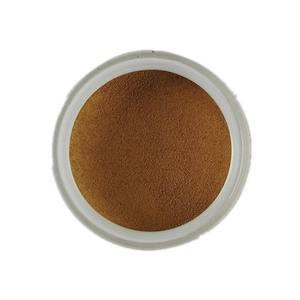Introduction to Dirt Stabilizers: Engineering Ground Stability for Modern Construction
Soil stabilizers have become important tools in civil design and infrastructure growth, offering a clinically sophisticated strategy to improving the mechanical properties of weak or unpredictable dirts. These chemical or mechanical representatives boost dirt toughness, decrease erosion, and increase load-bearing ability– making them crucial in road building and construction, slope stabilization, foundation reinforcement, and environmental remediation. As environment adjustment and urbanization location extraordinary pressure on land use, dirt stabilizers are playing a central role in developing durable, economical, and eco lasting earthworks.
(Soil Stabilizer)
Category and Devices of Activity
Dirt stabilizers can be extensively categorized right into chemical, organic, and mechanical kinds. Chemical stabilizers include lime, concrete, fly ash, polymers, and colloidal suspensions that respond with soil bits to develop hardened matrices or boost cohesion. Organic stabilizers include microbial-induced calcite precipitation (MICP) or plant-root reinforcement to bind dirt naturally with time. Mechanical stabilizers such as geotextiles, grids, and nails give architectural support without changing soil chemistry. Each approach runs via unique systems– from ion exchange and hydration reactions to physical complication– offering tailored services for different dirt kinds and project needs.
Applications Across Civil Design and Environmental Projects
The versatility of dirt stabilizers makes them applicable across a broad range of engineering self-controls. In road construction, they make it possible for making use of locally offered products by transforming weak subgrades right into stable bases, lowering the need for imported accumulations. Slope defense tasks take advantage of polymer-modified soils that resist surface area drainage and stop landslides. In mining and oil sands procedures, soil stabilizers assist control dirt emissions and reclaim degraded landscapes. Urban stormwater monitoring systems additionally integrate these technologies to enhance absorptive pavements and bioswales. Their capability to fulfill both useful and eco-friendly purposes placements dirt stabilizers as vital enablers of modern infrastructure strength.
Advantages Over Typical Dirt Improvement Techniques
Compared to standard approaches like deep compaction, dirt nailing, or excavation and substitute, soil stabilizers supply significant benefits in terms of expense, speed, and ecological influence. They lessen building waste, decrease transport requirements, and lower carbon footprints by utilizing commercial results such as fly ash or slag. Additionally, lots of contemporary stabilizers can be applied in situ– without comprehensive excavation– lowering labor intensity and project timelines. Their compatibility with automated spraying systems and precision shot strategies additionally enhances application precision and performance consistency across large-scale advancements.
Advancements Driving Next-Generation Soil Stablizing Technologies
Recent developments in material science and biotechnology are pressing the borders of what soil stabilizers can accomplish. Nanoparticle-based formulas such as nano-silica and graphene-enhanced polymers provide remarkable bonding and durability at low dosages. Bio-inspired stabilizers making use of enzyme technology or microbial procedures provide environment-friendly alternatives that break down safely over time. Smart stabilizers furnished with receptive release devices are being established to adapt to moisture fluctuations or temperature level adjustments during healing. These innovations not only broaden the performance envelope of dirt enhancement yet additionally line up with global sustainability objectives.
Difficulties and Ecological Factors To Consider
In spite of their advantages, soil stabilizers encounter challenges pertaining to long-lasting durability, regulatory conformity, and ecological influence. Some chemical stabilizers may leach right into groundwater or change soil pH, influencing regional ecological communities. Biodegradable options usually deal with efficiency under severe weather conditions. There is also irregularity in efficiency relying on dirt composition, compaction levels, and healing conditions. To address these worries, researchers are focusing on life-cycle analyses, eco-friendly chemistry methods, and hybrid systems that incorporate mechanical and chemical stablizing to make best use of performance while minimizing ecological trade-offs.
Market Fads and International Market Development
( Soil Stabilizer)
The international market for dirt stabilizers is experiencing durable development, driven by raising financial investments in transportation facilities, mining rehabilitation, and coastal durability projects. The United States And Canada and Europe lead in fostering as a result of stringent ecological laws and fully grown building and construction markets, while Asia-Pacific and Africa existing high-growth potential sustained by fast urbanization and rural road advancement. Key players are expanding product portfolios, buying R&D, and developing critical collaborations with design companies and government companies. Digital devices such as GIS-based website evaluation and AI-driven admixture optimization are likewise gaining grip, enhancing accuracy and scalability in dirt stabilization practices.
Future Leads: Integration with Smart Construction and Circular Economy Designs
Looking ahead, the future of soil stabilizers lies in intelligent, adaptive, and circular construction approaches. Combination with Building Info Modeling (BIM) platforms will permit real-time tracking of stablizing performance throughout a job’s lifecycle. IoT-enabled sensors embedded in supported layers might supply early cautions of subsidence or degradation. At the same time, circular economic situation concepts are driving rate of interest in recyclable stabilizers, carbon-negative binders, and waste-derived polymers that repurpose commercial deposits. As the building and construction sector shifts toward decarbonization and digital change, dirt stabilizers will be at the center of this evolution, enabling much safer, smarter, and much more sustainable earthworks.
Provider
Concrete additives can improve the working performance of concrete, improve mechanical properties, adjust setting time, improve durability and save materials and costs.
Cabr-concrete is a supplier of foaming agents and other concrete additives, which is concrete and relative products with over 12 years experience in nano-building energy conservation and nanotechnology development. It accepts payment via Credit Card, T/T, West Union and Paypal. Trunnano will ship the goods to customers overseas through FedEx, DHL, by air, or by sea. If you are looking for high quality superplasticizer in concrete, please feel free to contact us and send an inquiry. (sales@cabr-concrete.com).
Tags: concrete, concrete addtives, Soil Stabilizer
All articles and pictures are from the Internet. If there are any copyright issues, please contact us in time to delete.
Inquiry us

